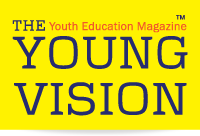
These rich countries have high levels of child poverty

A new Unicef report ranked 41 of the world’s wealthiest countries on how well prepared they are to meet the UN’s Sustainable Development Goals most relevant to child well-being.
It warned that in many of the countries studied higher incomes have failed to improve the lives of all children. This was notably the case in the United States and United Kingdom, where one in five children faces food insecurity. In comparatively poorer Mexico and Turkey this figure rises to one in three.
Unicef defines relative child poverty as living in a household whose disposable income, taking into account the size of the family, is less than 50% of the median income for the country in which they live.

Again, the US performs badly against this indicator, as does Spain. In fact, 17 of the 41 countries have above average levels (21%) of children living in poverty.

Overall, the countries that performed best across the indicators on children’s well-being were the Nordic nations, Germany and Switzerland. At the bottom of the league table were Chile, Bulgaria, Romania, Mexico and the US.
However, the report points out that there is room for improvement in all countries, with each ranking in the middle or bottom third for at least two of the goals. Across Europe one child in three is deprived in at least two ways.

However, on other indicators – income inequality, adolescent self-reported mental health and obesity – rich countries are actually on a downward trajectory.
The United Nations World Food Programme defines food security as having reliable and consistent access at all times to sufficient, safe, nutritious food to maintain a healthy and active life.
In two thirds of the countries, children from the poorest households are now worse off than they were in 2008. Obesity rates among 11-15 year olds are climbing, and so is the number of adolescents reporting two or more mental health problems a week.
